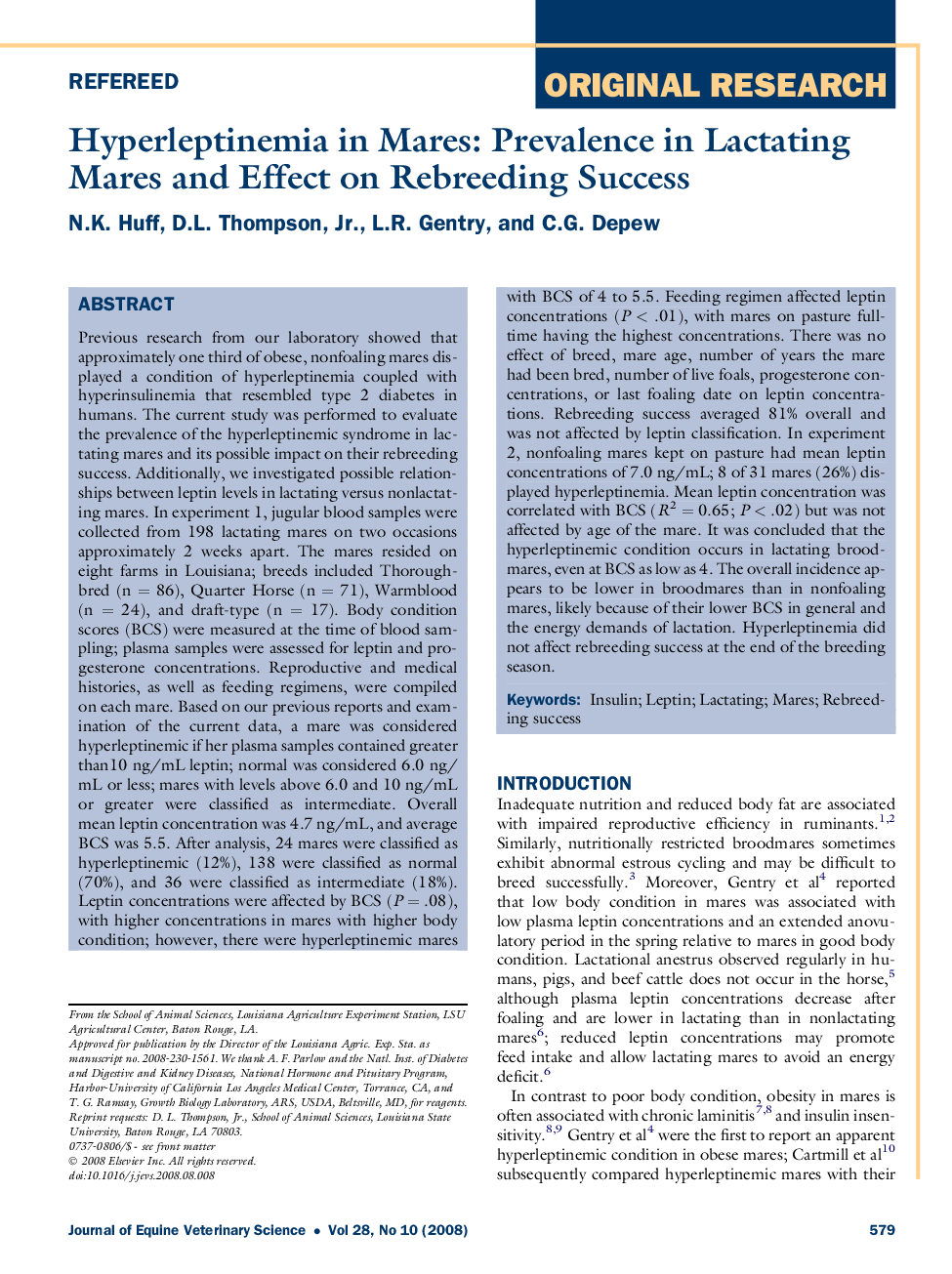| کد مقاله | کد نشریه | سال انتشار | مقاله انگلیسی | نسخه تمام متن |
|---|---|---|---|---|
| 2396536 | 1101630 | 2008 | 8 صفحه PDF | دانلود رایگان |

Previous research from our laboratory showed that approximately one third of obese, nonfoaling mares displayed a condition of hyperleptinemia coupled with hyperinsulinemia that resembled type 2 diabetes in humans. The current study was performed to evaluate the prevalence of the hyperleptinemic syndrome in lactating mares and its possible impact on their rebreeding success. Additionally, we investigated possible relationships between leptin levels in lactating versus nonlactating mares. In experiment 1, jugular blood samples were collected from 198 lactating mares on two occasions approximately 2 weeks apart. The mares resided on eight farms in Louisiana; breeds included Thoroughbred (n = 86), Quarter Horse (n = 71), Warmblood (n = 24), and draft-type (n = 17). Body condition scores (BCS) were measured at the time of blood sampling; plasma samples were assessed for leptin and progesterone concentrations. Reproductive and medical histories, as well as feeding regimens, were compiled on each mare. Based on our previous reports and examination of the current data, a mare was considered hyperleptinemic if her plasma samples contained greater than10 ng/mL leptin; normal was considered 6.0 ng/mL or less; mares with levels above 6.0 and 10 ng/mL or greater were classified as intermediate. Overall mean leptin concentration was 4.7 ng/mL, and average BCS was 5.5. After analysis, 24 mares were classified as hyperleptinemic (12%), 138 were classified as normal (70%), and 36 were classified as intermediate (18%). Leptin concentrations were affected by BCS (P = .08), with higher concentrations in mares with higher body condition; however, there were hyperleptinemic mares with BCS of 4 to 5.5. Feeding regimen affected leptin concentrations (P < .01), with mares on pasture full-time having the highest concentrations. There was no effect of breed, mare age, number of years the mare had been bred, number of live foals, progesterone concentrations, or last foaling date on leptin concentrations. Rebreeding success averaged 81% overall and was not affected by leptin classification. In experiment 2, nonfoaling mares kept on pasture had mean leptin concentrations of 7.0 ng/mL; 8 of 31 mares (26%) displayed hyperleptinemia. Mean leptin concentration was correlated with BCS (R2 = 0.65; P < .02) but was not affected by age of the mare. It was concluded that the hyperleptinemic condition occurs in lactating broodmares, even at BCS as low as 4. The overall incidence appears to be lower in broodmares than in nonfoaling mares, likely because of their lower BCS in general and the energy demands of lactation. Hyperleptinemia did not affect rebreeding success at the end of the breeding season.
Journal: Journal of Equine Veterinary Science - Volume 28, Issue 10, October 2008, Pages 579–586